In recent years, the popularity of caring for houseplants has grown like a weed, so much so that many people are beginning to recognize that their newfound hobby for keeping plants has perhaps blossomed into a full blown obsession - it’s gotten to the point where plant lovers are even questioning themselves, frequently asking google: Should I have plants in every room of my house? To this we say, considering how plants make great decorative additions to your home and also have a vast array of benefits, it is totally fine and you should definitely go ahead with having plants in every room of your house.
So, if you’re looking to populate your place with lovely, health promoting plants; look no further than this week’s blog as we discuss 20 indoor plants you should grow indoors.
The living room plays a vital role in our homes as the principal room for rest, relaxation, and entertainment; and no living room décor is complete without some flora to balance out the ambiance.
Considering how impactful the aesthetic of the living room can be for relaxation or hosting, it’s best to keep plants that suit the layout of your living room and are easy to manage. For most people, an overly large and leafy plant that will root itself as the focal point and overshadow all other decorative elements of your living room is not the way to go. You also don’t want high maintenance plants that might easily turn yellow or brown, withering the vibe of where you’ll entertain guests.
Furthermore, you should look into getting plants that can provide benefits like air purification, no allergenic properties, and are easy to clean.
So with all that said, which plants are best for living room? Here’s a list of the 5 best plants for the living room.
The Chinese evergreen is an affordable, lovely little slow grower with beautiful markings on its wide leaves. It can complement any living room layout and can be placed anywhere without having to consider its exposure to light as it grows very well in low light. Overall, this plant won’t invade too much space in your living room as it’s a slow grower, it’s pretty low maintenance, looks great, and is very affordable. Definitely a good place to start when shopping for plants for your living room.
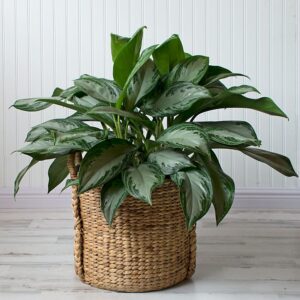
The Inch plant, also known as wandering jew (Tradescantia), is a creeping plant with numerous small leaves with distinct markings. Inch plants look great on coffee tables or mantles. They do not require direct sunlight to grow healthily but you do need to keep up with watering as they tend to lose those lovely leaf markings if their soil gets too dry.
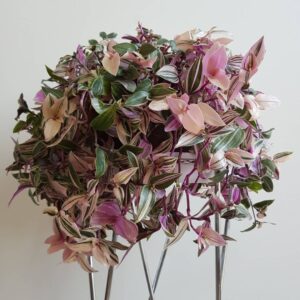
The African mask plant is an eye-catching member of the Alocasia family. It has elegant and slender corms from which grow deep green, arrowhead-shaped leaves with intricate light green patterning. It only requires bright indirect light and moist soil. This gorgeous plant can add character and flare to your room with its impressive shape and coloring.
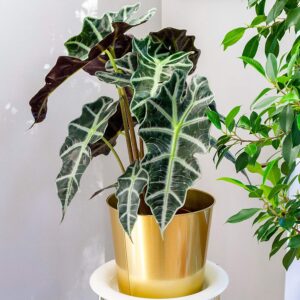
Peace lilies steal the show with their pretty white flowers and luscious waxy green leaves. They give off an air of grace and elegance which helps to provide a soft and calming atmosphere to a given space. In addition, peace lilies have air purifying qualities and were famously used in the NASA clean air study. They are also very easy to maintain as are one of the indoor plants that don’t need sunlight, and require minimal watering when indoors. As long as these two simple requirements are met, the peace lily will prosper happily in your living room and will flower throughout the year.
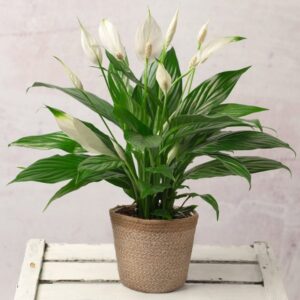
If I could only choose one type of plant to keep in my living room I would definitely choose snake plants. I just love the look of snake plants with their long and wavy leaves that stand up and display their vibrant shades of green - but not only that, they are also one of the best air purifying indoor plants AND they release their oxygen throughout the night. What’s more, they are super low maintenance, don’t require any special lighting conditions and, wait for it… snake plant safe for cats and dogs… what more could you want in a houseplant?
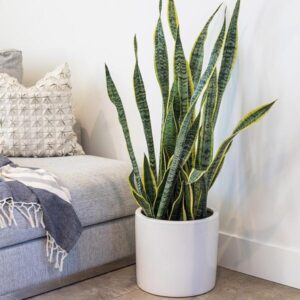
Those are the top 5 houseplants for the living room. None of these plants require direct sunlight; however, most of them need bright indirect sunlight. If your living room cannot provide at least a few hours of this kind of light everyday then you might consider getting an LED plant lamp which can easily and affordably provide your plants with the light they need.
Keeping plants in your bedroom not only adds some life and character, it also comes with a variety of benefits, including help with sleeping. As numerous recent studies have shown, your sleep can benefit greatly from clean air as pollutants like Xylene and Formaldehyde (common substances used in paints and furniture) notoriously affect sleep. Luckily, there are tons of plants that immensely help to neutralize the effect these pollutants have on sleep. In addition, you can ensure that the air quality of your room doesn’t have a negative impact on your sleep by keeping plants which only release oxygen at night due to their particular photosynthetic processes. By sticking with plants that have air purifying and release oxygen at night, you can rest assured that your sleep will be noticeably improved!
So then, what plants help you sleep, or rather, which combination of plants will optimize your sleep best? Read on to find out.
Succulents make the perfect mini bedroom plants thanks to their small size, adorable look, basic care requirements, and air improving benefits. There are dozens of varieties of succulents to choose from, but my personal favourite is Burro’s Tail because of its thick, plump, yet delicate leaves. I love the way it looks with its green branches cascading from my windowsill.
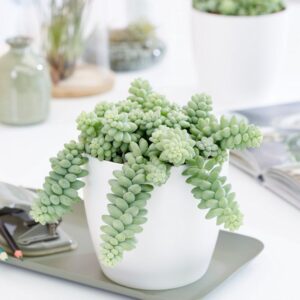
The Swiss Cheese Plant gets this quirky name from the patterned holes in its broad leaves. This plant traces its roots back to the Amazon rainforest where it survived by growing exceptionally wide and webbed leaves to soak in as much indirect sunlight from underneath the jungle canopy as possible. Indoors, it stays subtle and discreet with very few requirements save for moist soil. This plant is also one of the indoor plants that like humidity, given its tropical origins. It is also one of the best air purifiers on this list. Given its distinct look, low maintenance, and environmental benefits, the Swiss Cheese Plant makes a unique addition to your bedroom plant collection.
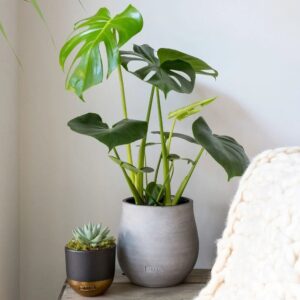
Aloe Vera is another amazing plant that removes harmful substances from the air and gives your room a much needed boost of oxygen throughout the night. They aren’t picky at all when it comes to their lighting preferences and will thrive in rooms with or without access to a lot of light. They also don’t require much watering considering they originated in the arid deserts of Arabia.
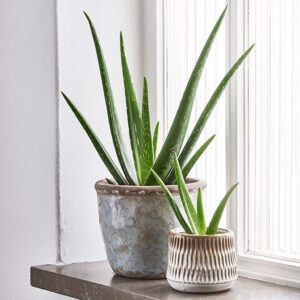
Calatheas are a perfect bedtime companion plant as they tend to curl their leaves closed at night and reopen them in the morning. They do very well in low-light environments and are amazing air cleaners. What’s more, they have a vibrant and spunky design that works wonders for livening up the bedroom.
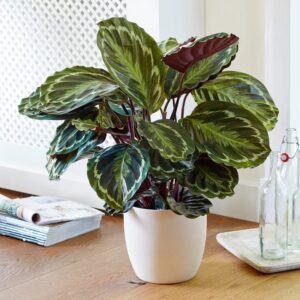
Admittedly, lavender is not a conventional houseplant, nor is it as low maintenance as some of these other plants on the list, but if you can provide the right conditions for it to grow happily, you’ll be rewarded with some incredible Zs. Not only is lavender a pollutant-neutralizing plant, but research has also shown that breathing in its aroma is one of the best natural ways to induce drowsiness. This is made possible by the naturally occurring chemical compounds present in lavender’s essential oils which, when breathed in, slow the heart rate and reduce blood pressure, ultimately helping your body relax and your mind settle. Lavender’s main requirement is just a few hours of direct sunlight every day. If you don’t have a south facing window in your bedroom, rather than move it to that part of your house every day, consider getting an LED plant lamp with a timer which you can set to suit your lavender plant’s needs.
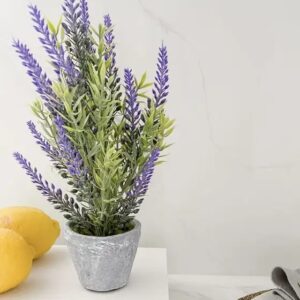
This is just a very brief list of plants that can help you sleep, there are many, many more. Regardless, if your bedroom can accommodate at least a couple of these plant varieties then you should be fast on your way to Snoozeville.
Bathrooms are a precarious room to keep plants in – the humidity tends to fluctuate a lot, they often don’t have any access to natural sunlight, and there aren’t as many options for placement. That said, a little greenery can really spruce up the atmosphere of your bathroom and I’d say it’s certainly worth a shot. Before we get into which plants can tolerate bathroom conditions best, here are some suggestions for how to successfully keep plants in the bathroom.
Tips for keeping plants in the bathroom:
-Make sure you choose indoor plants like humidity that can thrive in both warm and cool temperatures.
-All plants rely on light for photosynthesis to some degree so it’s best to keep the plants near a window if you can.
-Don’t let the plants get overly saturated with water from the shower as they will suffer root rot and die.
-Consider plants that don’t require soil or a pot and can be displayed creatively, like Tillandsia.
With that said, here are 5 kinds of plants that you can grow in your bathroom.
You can immerse yourself in the rainforest by adding this tropical hanging plant to your bathroom vanity or windowsill. Pothos is extremely hardy; it does well in humidity and low light conditions. Ideally, I would set it in a basket on a bare wall and let it pour down its lush leaves to give my bathroom that misty jungle feel after I’ve had a shower.
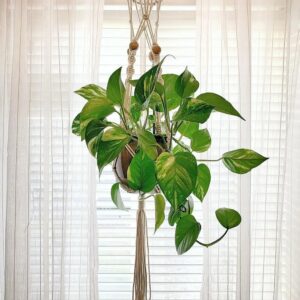
One of the main problems with keeping plants in your bathroom is that it’s tricky to find a spot to place a pot in, let alone a spot that has access to indirect sunlight. Tillandsia avoids this issue altogether as it doesn’t rely on soil for hydration and nutrition. Tillandsia, also called “air plant” uses its tendrils to absorb water and nutrition from the air – so you effectively water it every time you shower and also reduce the humidity at the same time. The air plant requires a few hours of indirect sunlight though, but since it isn’t rooted into any soil, you can literally just pick it up and place it wherever you want, whether that’s right on the windowsill or on the sink.
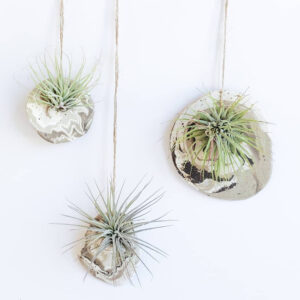
The spider plant is an all-time classic houseplant, and for good reasons. Spider plants are one of those rare indoor plants that don’t need sunlight; they’re very low maintenance, can tolerate a wide variety of environmental conditions, look great anywhere, and have air purifying properties. A spider plant will have very little issue with the humid and low light conditions in your bathroom; a small one would be an excellent addition to your bathroom wall or next to the sink.
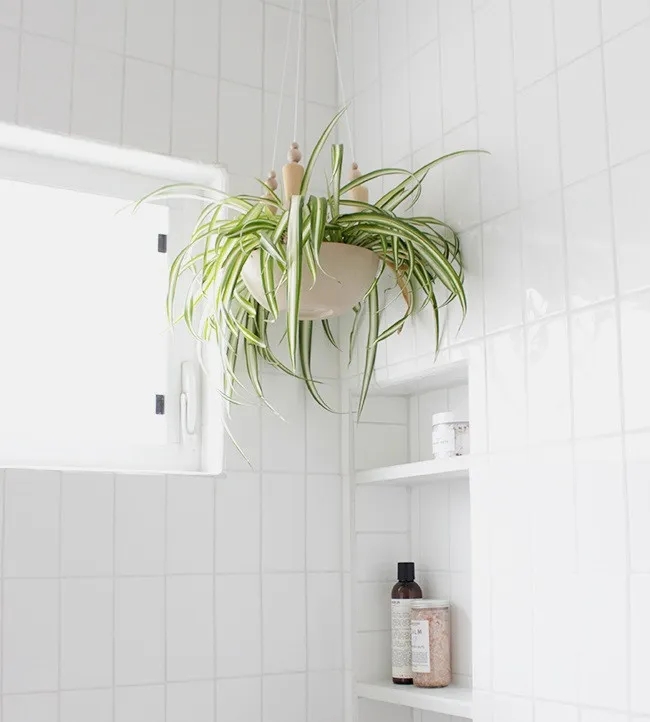
Perhaps the hardiest houseplant listed in this article, the cast-iron plant earned its common name because it’s just so hard to kill. This guy has very low lighting requirements; in fact, it can survive in almost full shade. As the name also suggests, this plant isn’t exactly an eye-catcher, but it still has a place in a bathroom that’s used less often.
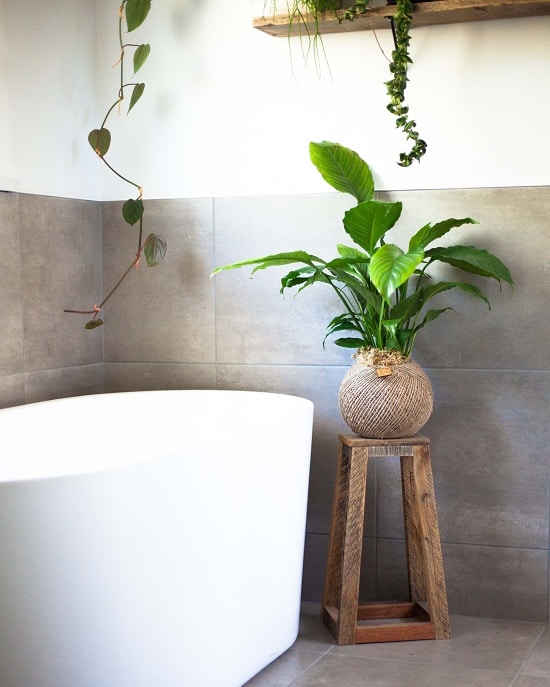
This tropical flowering plant may not be your first thought when it comes to plants you’re going to plant in your bathroom, but given their tendency to thrive in humid environments, the bathroom might be a good option. Gardenias have sturdy woody stocks, broad green leaves, and lovely white flowers which typically bloom from spring all the way until fall. They make a great decorative addition to a dim and humid bathroom; however, Gardenias are happiest with a few hours of bright indirect sunlight so it is best to place them near a south facing window. If your bathroom window situation doesn’t allow for adequate light, you can provide it by artificial means by keeping the plant near a full spectrum LED light source.
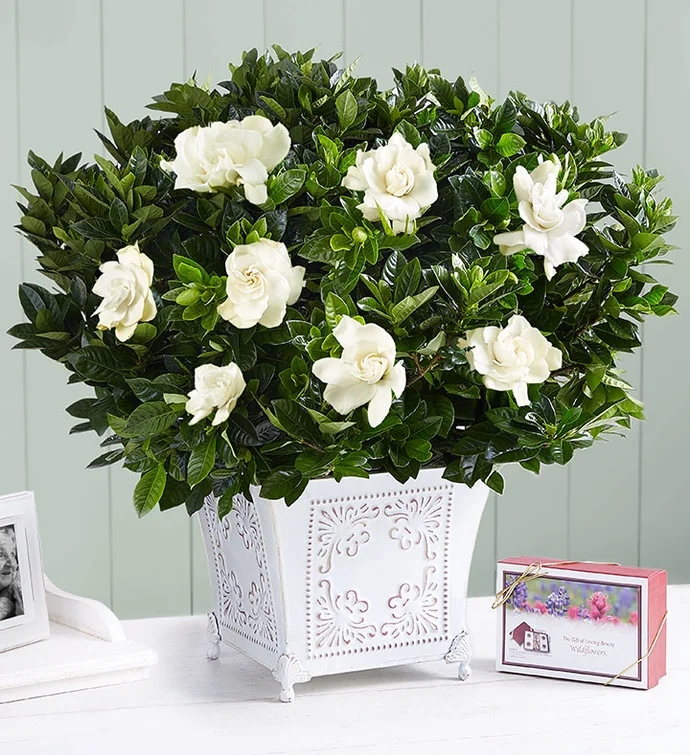
Keeping plants in the bathroom isn’t exactly ideal due to typically dim and humid conditions, but it can be done with these 5 plants.
The unfortunate truth about several common household plant varieties is that they can be toxic to our furry friends. This is because many of these plants have tropical origins and have developed several defense mechanisms to survive in that competitive environment - that includes toxic compounds that can harm animals if consumed. Luckily, there are several varieties of pet friendly indoor plants that look amazing and have great benefits.
Ponytail palms are not only safe for cats and dogs, but they also have a stylish and spunky look to liven up your place. Cats tend to enjoy swatting at or chewing on their long slender leaves, but this won’t affect the health of the plant or your cat.
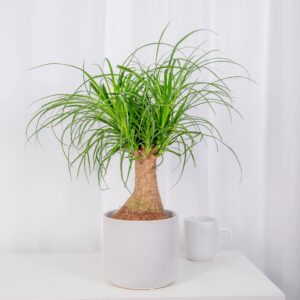
These pretty little flowers look great on shelves or table surfaces. They are safe for pets and humans alike and do a great job at purifying the air.
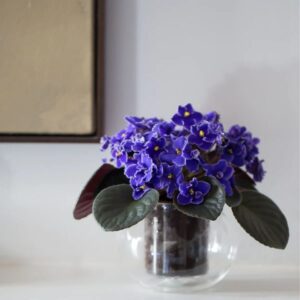
Venus fly traps are dangerous for pets if your pet is a fruit fly. These are really cool plants to keep in your kitchen to keep any little bugs or pests away. No need to worry about kitties, they don’t possess any harmful toxins. Just be sure to let it have at least 4 hours of direct sunlight every day.
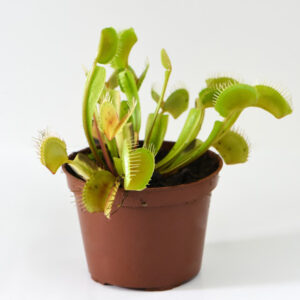
One of my personal favourite tropical plants, Bromeliad, has such an interesting and exotic look. They like areas with plenty of air flow and bright indirect sunlight, as well as consistently moistened soil. Slightly higher maintenance than your average houseplant, but they’re pet-friendly and very unique looking.
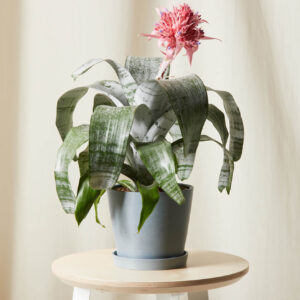
Fresh garden herbs give off a lovely aroma and are edible for everyone, including our fur babies. Rosemary and basil are my two favourite herbs, but I also grow a little catnip for my 17-year-old kitty, Kipper. Just make sure that you don’t overwater your herbs and that they get a few hours of direct sunlight each day.
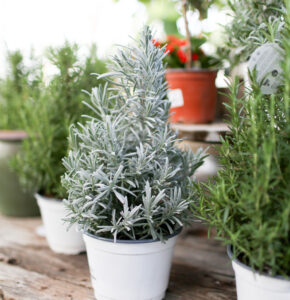
That wraps our list of 20 indoor plants you should grow in your home. Most of these plants on our list have very low requirements and are pet-friendly, but if you’re not sure, don’t hesitate to ask the staff at your local plant shop.
You must be logged in to post a comment.